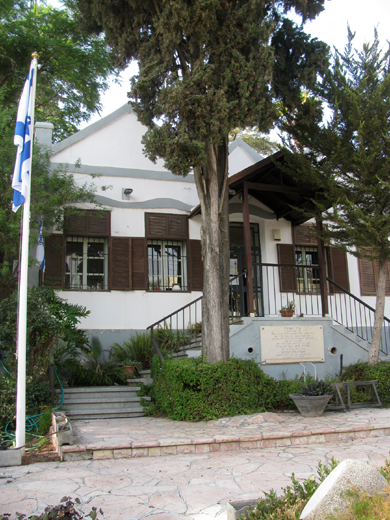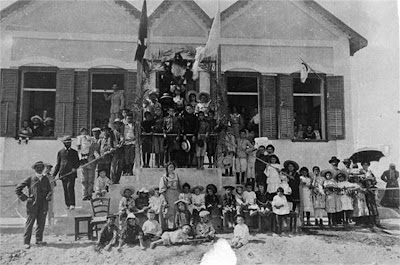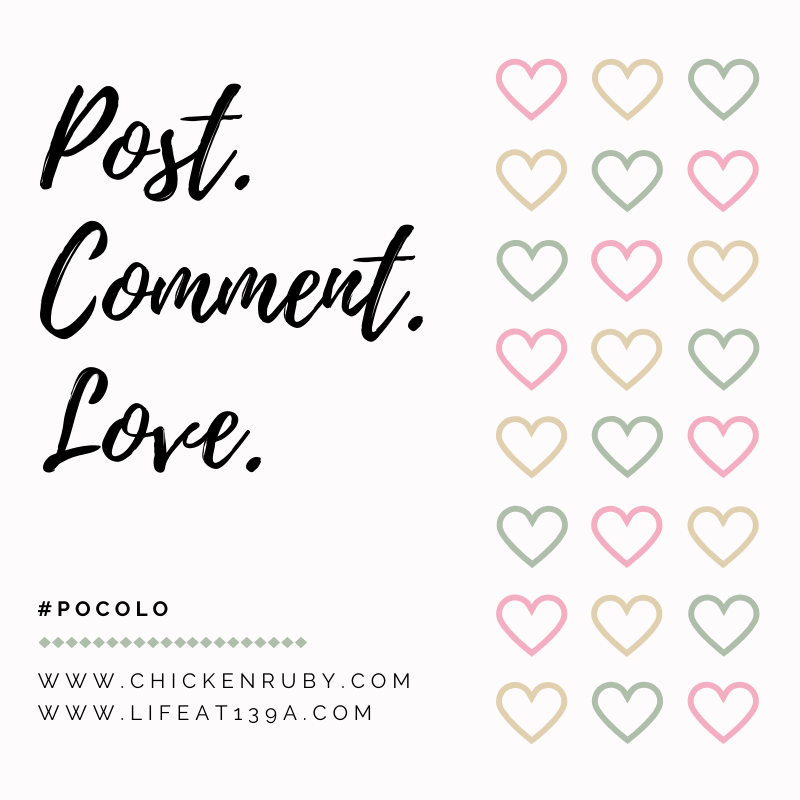Ness Ziona's first communal building, 1907.
Photo credit:
Netto Design House
In 1887, after the family had begun to cultivate grapes, almonds and raise bees, Lehrer posted signs at the arrival gate in the Jaffa port imploring
fellow Jews to help him settle the land. These new arrivals established a separate neighbourhood named Tel Aviv (the city of Tel Aviv did not yet exist). In 1891
Michael Halperin, a member of the First Aliyah, bought more land in the wadi. He arrived at a village ceremony riding his horse and waving a blue and
white flag inscribed with the words "Ness Ziona" emblazoned in gold. "Ness
Ziona" means "Banner to Zion". This motto is based on a verse in the Book of
Jeremiah (Jeremiah 4:6). In 1897 Halperin offered this flag, minus the words Ness Ziona, to
the first Jewish Congress in Basel, which was presided over by Theodor Herzl. It was later adopted by the State of Israel as the national
flag. Halperin's actions led the settlers to change the settlement's name to
Ness Ziona.
In due course, the colonies of Nahalat Reuben and Ness Ziona, the neighbourhood of Tel Aviv in Ness Ziona and the
Arab village Wadi Hunayn merged into a single, larger village. Its main
export was citrus, grown in orchards that were irrigated by numerous wells dug
around the village. The residents worked in the orchards and sold their yield
in the cities. Lining the walls of Beit Rishonim are old
photos of camels carrying boxes of oranges to the market in Jaffa and the
first Jewish pioneers toiling in the fields. By the 1920s, despite
difficult struggles against neighbouring Arabs, malaria and challenging
agricultural conditions, Ness Ziona was thriving and prosperous.
Photo credit: The Ness Ziona Workers, 1883-1948, by Yoav Regev
The Great Synagogue of Ness Ziona, located next door to Beit Rishonim, bottom photo, was built in the 1920s, during the period of the Third Aliyah. In 1924 the British Army contracted with the Israel Electric Company
to supply wired electric power to Ness Ziona. Until the 1948 War of
Independence this amalgamated village was the only mixed Arab-Jewish village
in
Mandatory Palestine. The co-existence of Arabs and Jews was, on the whole, peaceful, though
the village was attacked by Arab forces in the
1936–39 Arab Revolt, and again during the 1948 war.
After the establishment of the State of Israel, Ness Ziona's population
almost tripled. Families from Iran, Morocco, Yemen and Iraq moved in in
the 1950s and 60s, living in ma'abarot (immigrant and refugee absorption camps ) at the edge of town
until they could afford to buy something of their own. Today the city's
population is still relatively small - around 50,000 - with an
annual growth rate of two percent.
Ness Ziona's story is a story of hardship and poverty, famine and disease,
but also of great love for the Land of Israel, a story of the
establishment and development of the beekeeping industry in the town, the
first of its kind in Palestine, and the story of how the national flag was
raised for the first time in the town.
* This post has been shared on Little Things Thursday, Wordless Wednesday (on Tuesday), Our World Tuesday, Tuesday's Treasures and My Corner of the World.












































19 comments:
Fascinating history of the area and its struggles. Israel just has so many ancient and modern stories.Thank you for sharing.
Oh wow - what a fascinating place to visit!
It is so interesting to learn how a village or town grew with the community working together. It is sad to hear this area experienced such poverty and struggles. Thank you for sharing!
What an fascinating place and story. Interesting about the flag and I love all the old photographs. Thank you for sharing this. xx
What an interesting piece of history to learn about and explore x #pocolo
Such interesting history about this city and the Israeli flag. Beautiful photos of the museum.
...a nice history lesson.
What an interesting museum. I loved learning more about Ness Ziona's story. Thanks for sharing Lisa. x
I enjoyed seeing the photos and getting to know more about the Museum which I will share with my son in our Homeschool History Class.
I love learning about the history of all the places you visit! Thanks for taking us along on your journey.
Thanks for the history lesson and the guided tour, all very interesting and visually appealing.
Thank you for sharing at https://image-in-ing.blogspot.com/2022/01/seen-on-blue-ridge-parkway.html.
Shalom!
...this museum as a rich history to tell and I thank you for sharing it. Take care and stay well.
The building has its own history prior to becoming a museum. Thank you for educating me about the rich history of Israel.
Very interesting information on the history and impact of Ness Ziona--thank you for sharing!
I love these posts of yours - so informative - thank you. Thanks for sharing with #PoCoLo
Further proof that, in nations around the world, so much history and culture is in the smaller towns and villages that "tourists" might not visit. Thanks for sharing!
Saw your image since our world of this week was not up yet. How interesting to see how Tel Aviv developed. Had no idea this was more than a century ago! Thanks for telling the story:) Have a great (new) week, Emille.
What an interesting place to visit. Thanks for linking with #pocolo, sorry for the delay with commenting and sharing. Hope to see you back soon.
Post a Comment